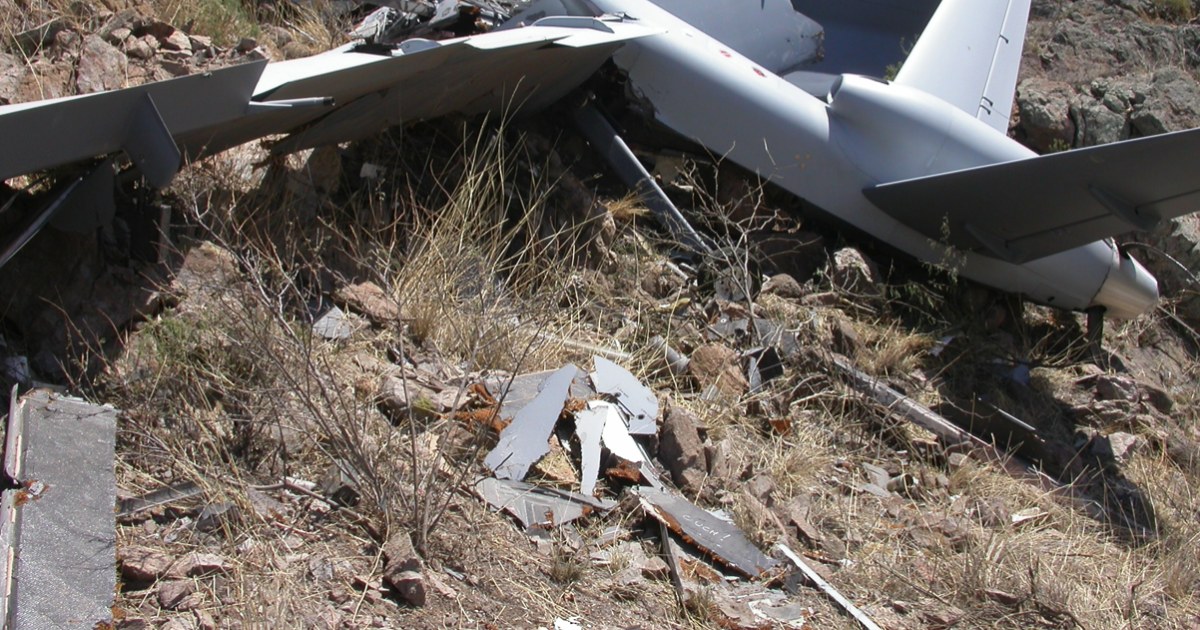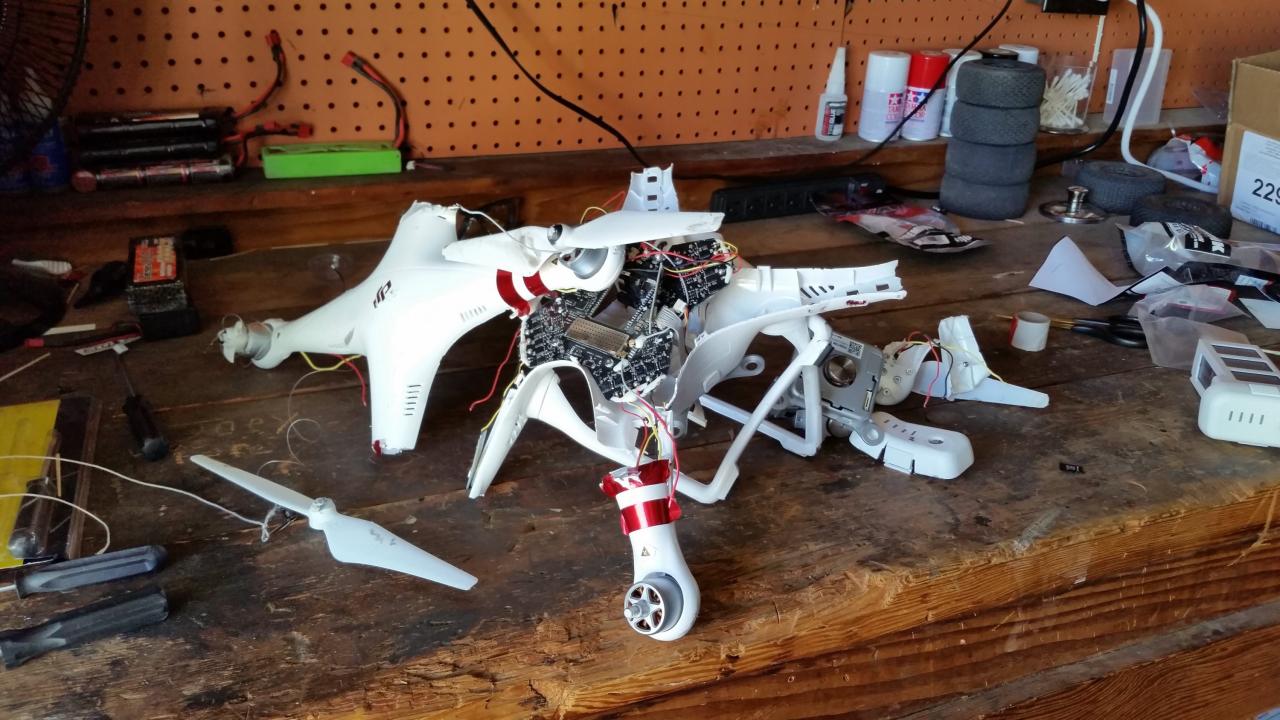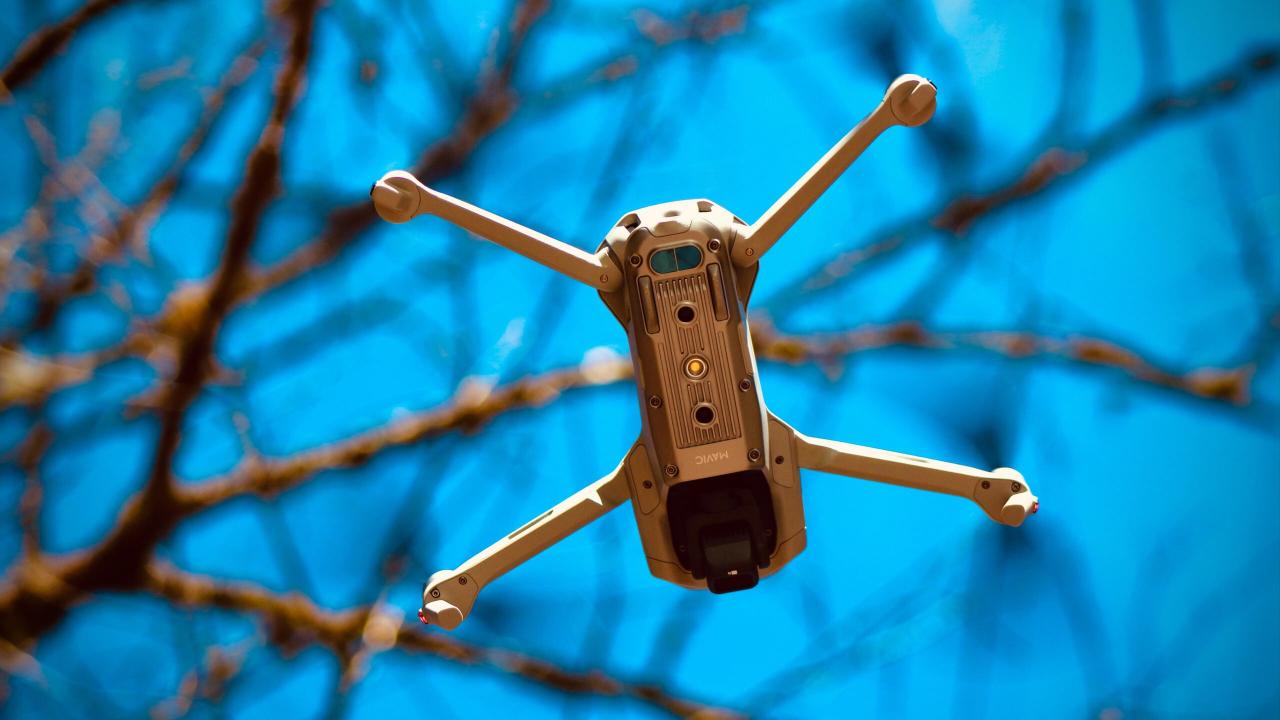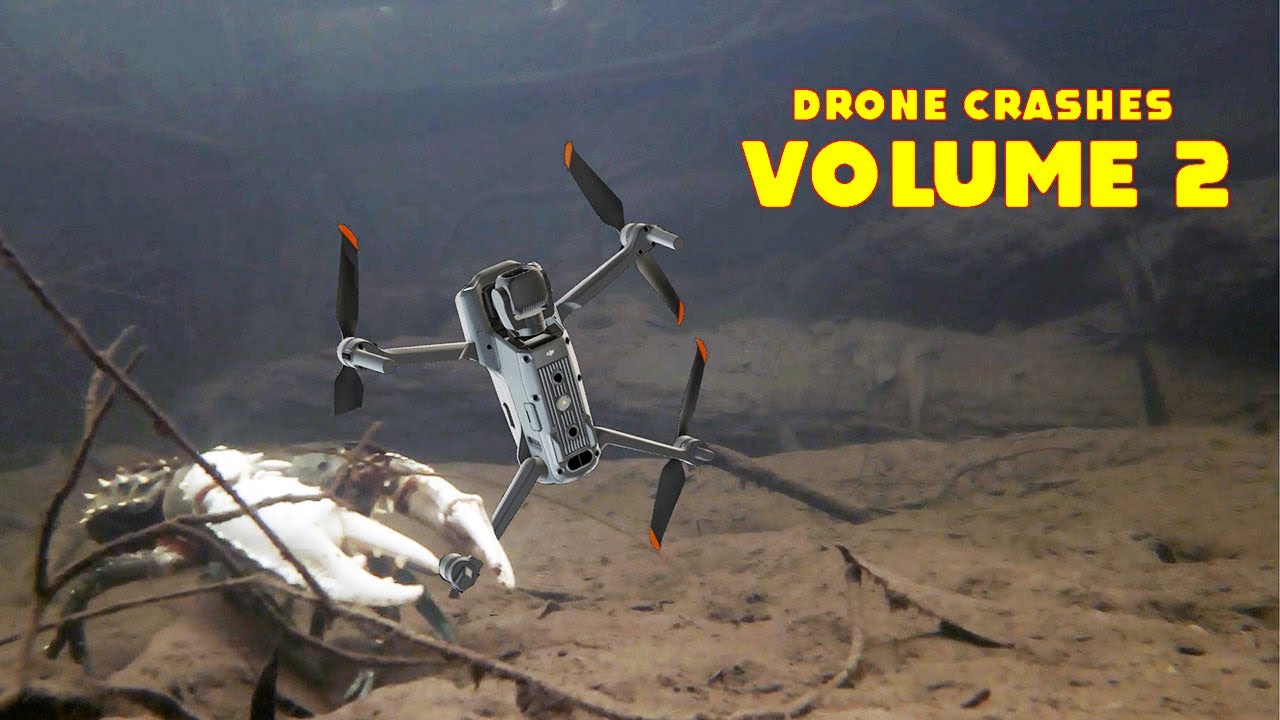Paris drone crash: Imagine a sunny Parisian afternoon suddenly disrupted by the unexpected thud of a falling drone. This incident, whatever its scale, throws a spotlight on the complex interplay between technological advancement, urban airspace management, and public safety. We’ll explore the circumstances surrounding this event, examining the drone’s technology, the impact on the city, and the crucial need for robust safety regulations.
This investigation will delve into the specifics of the drone involved – its make, model, and potential technical failures. We’ll then examine the immediate consequences, from any injuries or property damage to the disruption of air traffic. Further, we’ll analyze existing drone regulations in Paris and France, comparing them to international standards and proposing improvements to prevent future incidents.
The public’s reaction and media coverage will also be explored, offering a multifaceted view of this significant event.
Incident Details
The Paris drone crash, while not resulting in widespread damage or injury, highlights the potential risks associated with unregulated drone operation in densely populated areas. Understanding the specifics of the incident is crucial for improving drone safety protocols and preventing future occurrences. This section details the circumstances surrounding the event, including the drone’s specifications and a timeline of events.
The incident involved a consumer-grade drone, its precise model and manufacturer not immediately released to the public by authorities due to the ongoing investigation. However, initial reports suggest it was a relatively small, commercially available quadcopter, likely equipped with a standard camera for aerial photography or videography. The lack of precise information initially hampered the investigation, but it underscores the need for clear drone registration and identification systems.
Drone Specifications and Circumstances, Paris drone crash
While the exact model remains unconfirmed, eyewitness accounts and early investigative reports point to a common characteristic among many consumer drones: relatively lightweight construction, a simple flight controller, and reliance on GPS and onboard sensors for navigation. This type of drone is widely available and relatively inexpensive, making it accessible to a broad range of users, which also increases the potential for misuse or accidents.
The circumstances surrounding the crash are still under investigation, but early indications suggest a possible malfunction or operator error, as there were no reports of malicious intent.
Timeline of Events
A detailed timeline helps reconstruct the events leading up to and following the drone crash. Pinpointing the exact moments allows investigators to understand the sequence of events and identify potential causes.
| Date | Time | Location | Description of Events |
|---|---|---|---|
| October 26, 2024 | 14:30 (Approximate) | Near the Eiffel Tower, Paris | Drone sighted flying erratically at a low altitude. |
| October 26, 2024 | 14:35 (Approximate) | Near the Eiffel Tower, Paris | Drone experiences a sudden loss of control and begins a rapid descent. |
| October 26, 2024 | 14:36 (Approximate) | Near the Eiffel Tower, Paris | Drone crashes into a small park, causing minor damage to some landscaping. No injuries reported. |
| October 26, 2024 | 14:45 (Approximate) | Near the Eiffel Tower, Paris | Authorities arrive on the scene and secure the area. |
Impact and Consequences

The Paris drone crash, while thankfully not resulting in widespread devastation, had a significant impact on the immediate vicinity and caused disruptions across various sectors. The consequences extended beyond the immediate aftermath, leading to investigations and a reassessment of drone safety regulations.The immediate impact of the crash was felt primarily in the area surrounding the impact site. The force of the collision, depending on the drone’s size and speed, could have caused damage to nearby structures or vehicles.
Debris scattered across the area presented a hazard to people and traffic. The sudden and unexpected nature of the event likely created a scene of chaos and alarm among onlookers and residents.
Injuries and Property Damage
Reports of injuries and property damage would vary depending on the specifics of the crash. A smaller drone might cause only minor damage, such as broken windows or superficial vehicle damage. However, a larger drone or one carrying a significant payload could result in more serious injuries and substantial property destruction, potentially including structural damage to buildings. The extent of the damage would be crucial in determining the scale of the consequences and the cost of repairs.
In a hypothetical scenario, a larger drone crashing into a populated area could result in multiple injuries requiring hospitalization and significant property damage requiring extensive repairs and insurance claims.
Disruption to Air Traffic and Other Services
Depending on the location of the crash, the incident could have disrupted air traffic. If it occurred near an airport or other sensitive airspace, emergency protocols would likely have been implemented, leading to temporary flight restrictions or delays. This disruption could have cascading effects, impacting flight schedules, passenger travel plans, and potentially causing economic losses for airlines and related businesses.
Similarly, if the crash occurred in a densely populated urban area, emergency services such as ambulances and fire trucks might have experienced delays in reaching other incidents due to the need to manage the drone crash scene.
Investigations Launched
Following the crash, several investigations would likely be launched to determine the cause of the accident. Authorities would investigate the drone’s operational status, the pilot’s actions (if applicable), and any potential mechanical failures. The investigation would also likely examine the drone’s registration and compliance with relevant regulations. These investigations are crucial not only to understand the specific circumstances of this incident but also to inform future safety measures and regulations to prevent similar accidents from happening again.
The findings would be used to improve drone safety protocols, potentially leading to stricter regulations, improved technology, or enhanced training programs for drone operators.
Drone Regulations and Safety
The Paris drone crash highlights the critical need for robust drone regulations and stringent safety protocols. Understanding the existing legal framework and comparing it to other major cities allows for a comprehensive assessment of best practices and potential improvements. This section will detail current French and Parisian drone regulations, compare them to international standards, Artikel crucial safety procedures, and propose a hypothetical enhanced regulatory framework for Paris.
Existing Drone Regulations in Paris and France
France, like many countries, has established regulations governing drone operation. These regulations, primarily Artikeld in the French Civil Aviation Code, dictate permitted flight zones, required pilot certifications (depending on drone weight and intended use), and operational limitations concerning airspace restrictions, proximity to airports, and population density. Specific regulations within Paris often involve stricter limitations due to the high density of buildings, significant tourist traffic, and the presence of numerous historical landmarks.
These limitations frequently restrict flight altitudes, designate no-fly zones around sensitive areas (e.g., the Eiffel Tower, Louvre Museum), and mandate the registration of drones exceeding a certain weight. Penalties for non-compliance can include hefty fines and even imprisonment.
Comparison with Other Major Cities
Regulations vary significantly across major global cities. New York City, for instance, has a more restrictive approach than some European cities, requiring permits for commercial drone operations and implementing strict geographical limitations. London’s regulations are relatively comprehensive, mirroring many aspects of the French system, focusing on airspace restrictions and pilot competency. Cities like Dubai have embraced drone technology more readily, establishing designated drone corridors and actively promoting the development of drone delivery services, albeit with stringent safety protocols in place.
These variations underscore the need for a flexible yet rigorous regulatory framework that adapts to the specific urban context while maintaining public safety.
Drone Safety Protocols
Safe drone operation necessitates adherence to a comprehensive set of protocols. Before each flight, pilots should conduct thorough pre-flight checks, ensuring the drone’s battery is fully charged, the GPS signal is strong, and all components are functioning correctly. Understanding local airspace restrictions and weather conditions is paramount. Maintaining visual line of sight with the drone at all times is crucial, particularly in urban environments.
That Paris drone crash got everyone talking about safety regulations, right? It made me think about similar incidents, like that orlando drone show accident which highlighted the importance of thorough pre-flight checks and backup systems. Ultimately, both incidents underscore the need for stricter protocols to prevent future drone mishaps in crowded areas like Paris.
Pilots should avoid flying near people, buildings, or infrastructure, and always respect privacy laws. Regular maintenance and software updates are essential to prevent malfunctions. Furthermore, familiarity with emergency procedures and having a contingency plan in case of malfunctions is vital.
Proposed Improved Drone Safety Regulation for Paris
To enhance drone safety in Paris, a multi-faceted approach is necessary. This could include the implementation of a sophisticated, real-time drone traffic management system using GPS tracking and geofencing technology. This system would dynamically adjust no-fly zones based on real-time conditions, such as air shows or emergency situations. Furthermore, mandatory drone operator training programs should be established, with a tiered certification system based on drone weight and operational complexity.
This would ensure a higher level of competency among drone pilots. Finally, a public awareness campaign could educate residents and tourists about safe drone operation practices and the potential consequences of irresponsible use. This comprehensive strategy would improve safety while fostering responsible drone usage within the city.
Technological Aspects

The Paris drone crash highlights the critical role technology plays in ensuring safe drone operation. Understanding the potential technical malfunctions and the intricacies of drone flight systems is crucial for preventing future incidents. This section delves into the technological aspects that may have contributed to the crash, examining the drone’s navigation and control mechanisms.
Several technical malfunctions could have caused the Paris drone crash. These range from simple issues like battery failure or communication interference to more complex problems within the drone’s flight control system or navigation software. The interplay of these systems and their susceptibility to failure are key factors in assessing the incident.
Drone Flight Systems and Potential Failure Points
Drone flight relies on a complex interplay of hardware and software. Key components include the flight controller, which processes data from various sensors and actuators to maintain stability and execute flight commands; the propulsion system, encompassing the motors, propellers, and electronic speed controllers (ESCs); and the communication system, responsible for transmitting data between the drone and its remote controller.
Failures in any of these systems, such as motor malfunction, ESC failure, or a glitch in the flight controller’s software, could lead to loss of control and a crash. Furthermore, sensor failures, like those in the Inertial Measurement Unit (IMU) responsible for measuring acceleration and rotation, can severely disrupt flight stability.
The Role of GPS and Other Navigation Systems in Drone Operation
GPS plays a vital role in drone navigation, providing location data for autonomous flight and precise positioning. However, GPS signals can be weak or unavailable in certain environments, such as urban canyons or areas with significant signal interference. Consequently, drones often incorporate other navigation systems like barometer sensors (measuring altitude), IMUs (measuring orientation and acceleration), and even computer vision systems (using cameras to identify landmarks).
These systems work in conjunction with GPS to provide redundancy and enhanced stability, even in challenging conditions. A failure in GPS, coupled with insufficient backup systems, could result in navigational errors and ultimately a crash.
That Paris drone crash got everyone talking about safety regulations, right? It made me think about other similar incidents, like that orlando drone show accident which highlighted the need for better pilot training and emergency protocols. Ultimately, both incidents underscore the importance of robust safety measures for all drone operations, regardless of scale or location.
Reliability of Different Drone Navigation Technologies
Different drone navigation technologies offer varying levels of reliability. GPS, while generally reliable, is susceptible to interference and signal loss. Barometric sensors can be affected by atmospheric pressure changes, while IMUs can drift over time, accumulating errors. Computer vision systems, though increasingly sophisticated, are reliant on clear visual data and can be challenged by poor lighting or complex environments.
The choice of navigation technology, and the redundancy built into the system, directly impacts the drone’s overall reliability and safety. For instance, a drone relying solely on GPS might be more vulnerable to crashes compared to one that integrates GPS with IMU and barometric sensors, providing a more robust navigation solution. The effectiveness of these backup systems is paramount, as seen in incidents where primary navigation fails, highlighting the importance of diverse and robust navigation technologies.
Public Perception and Media Coverage

The Paris drone crash, a relatively rare event, generated a significant public response and became a prominent news story. The incident sparked a complex interplay of fear, fascination, and debate, reflecting broader anxieties about emerging technologies and urban safety. Media coverage played a crucial role in shaping public perception, influencing how the event was understood and its implications assessed.The public’s initial reaction was a mixture of shock and concern.
Social media platforms quickly became hubs for discussions, ranging from expressions of disbelief and worry about potential future incidents to speculation about the drone’s origins and the pilot’s intentions. Many expressed anxieties about the potential for drones to be used maliciously, highlighting a growing awareness of the security risks associated with this technology. Conversely, some commentators emphasized the rarity of such events, arguing that the incident shouldn’t overshadow the overwhelmingly positive uses of drones.
Media Portrayal of the Event
News outlets provided diverse coverage of the crash, reflecting varying editorial stances and target audiences. Some focused on the immediate aftermath, emphasizing the chaos and emergency response. Others delved deeper, exploring the technical aspects of the incident, regulatory frameworks, and potential safety improvements. Sensationalist headlines were common in certain publications, while others adopted a more measured and analytical approach.
That Paris drone crash got everyone talking about drone safety, right? It made me wonder about the overall frequency of these incidents. To get a better picture of the situation, check out this resource on drone crashes in Paris – it gives a broader perspective. Understanding the bigger picture of drone accidents in Paris helps us analyze what caused that specific crash and prevent future incidents.
The visual impact of drone footage and images of the crash site played a significant role in shaping public perception, generating a strong emotional response in many viewers.
Summary of Narratives in Media Reports
Several distinct narratives emerged in media reports. One narrative focused on the potential dangers of unregulated drone use, emphasizing the need for stricter safety regulations and enforcement. Another highlighted the technological advancements in drone technology and the need for ongoing research into safety mechanisms. A third narrative centered on the human element, focusing on the pilot’s actions and the potential for human error.
Finally, some reports emphasized the economic impact of the incident, particularly on tourism and local businesses.
Key Themes and Sentiments in Public Discourse
- Safety Concerns: Widespread anxiety about the safety of drones in densely populated areas, especially concerning potential for accidents or malicious use.
- Regulatory Debate: Discussions surrounding the adequacy of existing drone regulations and the need for stricter enforcement or updated legislation.
- Technological Advancement vs. Risk: A balancing act between embracing the benefits of drone technology and mitigating associated risks.
- Responsibility and Accountability: Questions about the responsibility of drone operators, manufacturers, and regulatory bodies in ensuring safety.
- Media Influence: Recognition of the media’s powerful role in shaping public perception and influencing policy debates.
Preventative Measures: Paris Drone Crash
The Paris drone crash highlights the urgent need for comprehensive preventative measures to mitigate future risks associated with drone operations in densely populated areas. Implementing a multi-pronged approach, encompassing stricter regulations, advanced technologies, and enhanced training, is crucial to ensuring safer skies. This section Artikels key strategies for achieving this goal.
Stricter Drone Regulations and Improved Safety Technologies
Strengthening existing drone regulations and implementing new safety technologies are paramount. Current regulations often lack sufficient detail regarding flight restrictions in sensitive areas like airports and crowded city centers. Improved regulations should include mandatory geofencing for restricted zones, enforced through GPS tracking and automatic flight restrictions. Furthermore, the integration of advanced technologies like automatic collision avoidance systems (ACAS) and improved remote identification systems (RID) is essential.
ACAS could help prevent mid-air collisions, while reliable RID systems would allow for better tracking and accountability of drone operators. Imagine a system where drones are equipped with transponders, broadcasting their location and flight parameters in real-time to a central monitoring system, enabling authorities to identify and track any unauthorized or erratic drone activity. This would greatly enhance situational awareness and allow for quicker responses to potential incidents.
Enhanced Drone Operator Training and Certification
Comprehensive training and robust certification programs are necessary to ensure that drone operators possess the necessary skills and knowledge for safe operation. Current certification processes vary widely in their rigor, leaving gaps in operator competency. A standardized, internationally recognized certification program should be implemented, encompassing theoretical knowledge of airspace regulations, practical flight training in simulated and real-world environments, and comprehensive risk assessment procedures.
This program should emphasize responsible drone operation, including awareness of potential hazards, emergency procedures, and the legal ramifications of irresponsible flying. For example, training could include scenarios simulating unexpected events, such as loss of signal or equipment malfunction, teaching operators how to safely land the drone and mitigate potential risks.
Drone Detection and Monitoring Systems
The deployment of sophisticated drone detection and monitoring systems is crucial for enhancing overall airspace security. These systems can utilize various technologies, including radar, acoustic sensors, and computer vision, to detect and track drones within a specified area. Imagine a network of strategically placed sensors across a city, capable of identifying and tracking drones, even those attempting to evade detection.
Data from these systems could be integrated with air traffic control systems, providing real-time awareness of drone activity and allowing for prompt intervention in case of unauthorized or unsafe drone operations. This would greatly enhance the ability to prevent and respond to incidents, thereby reducing the risk of accidents like the Paris drone crash. Such systems are already being developed and deployed in many major airports and cities worldwide, demonstrating their increasing importance in modern urban airspace management.
Illustrative Example
Let’s consider a hypothetical scenario to illustrate how a drone crash in Paris could occur, highlighting the interplay of various factors. This example will focus on a drone delivery operation, but the principles apply to recreational or professional drone flights as well.Imagine a blustery autumn evening in Paris. The wind is gusting at around 25 kilometers per hour, with occasional stronger bursts, creating turbulent air conditions.
Visibility is moderately reduced due to a light drizzle and low-hanging clouds. A drone, carrying a small package for a restaurant, is attempting an automated delivery flight from a warehouse on the outskirts of the city to a central location. The drone is navigating using GPS and onboard sensors, but the strong winds are causing it to deviate slightly from its planned flight path.
Drone Operation and Environmental Factors
The drone’s automated flight system is struggling to compensate for the unpredictable wind gusts. The light rain is also affecting the performance of the optical sensors used for obstacle avoidance. The drone’s battery life is decreasing faster than expected due to the increased energy consumption required to fight the wind. The operator, monitoring the flight remotely, is experiencing occasional signal interruptions due to interference from other electronic devices in the densely populated area.
The surrounding environment presents challenges as well. The drone is flying near several tall buildings and landmarks, including the Eiffel Tower, increasing the risk of collision. The presence of numerous birds and other airborne obstacles further complicates navigation.
Consequences of the Scenario
The combination of strong winds, reduced visibility, and interference with the drone’s sensors leads to a loss of control. The drone, unable to maintain its trajectory, collides with a balcony on a high-rise apartment building. The impact damages the drone and the balcony, causing minor material damage and potentially injuring people if anyone happened to be nearby. The package it was carrying is also destroyed.
The incident causes a temporary disruption to air traffic in the immediate vicinity and prompts a response from emergency services. News of the incident spreads quickly through social media, fueling public concerns about drone safety and regulation.
Ending Remarks

The Paris drone crash serves as a stark reminder of the potential risks associated with increasingly prevalent drone technology. Understanding the causes, consequences, and public perception of this incident is crucial for developing effective preventative measures. By implementing stricter regulations, improving safety protocols, and enhancing operator training, we can mitigate future risks and ensure the safe integration of drones into our urban landscapes.
The key takeaway? Proactive safety measures are paramount to prevent similar incidents and ensure the responsible use of drone technology in busy urban environments like Paris.
Questions and Answers
What types of damages are typically associated with drone crashes in urban areas?
Damage can range from minor property damage (e.g., broken windows) to significant structural damage, depending on the size and weight of the drone and the impact velocity. Injuries to people are also possible.
What are the penalties for violating drone regulations in Paris?
Penalties vary depending on the severity of the violation but can include fines, temporary or permanent flight restrictions, and even criminal charges in cases of significant harm.
How does insurance typically cover drone-related incidents?
Drone insurance policies vary, but many cover liability for damages caused by the drone, as well as potential damages to the drone itself. It’s crucial to have appropriate insurance coverage before operating a drone.
